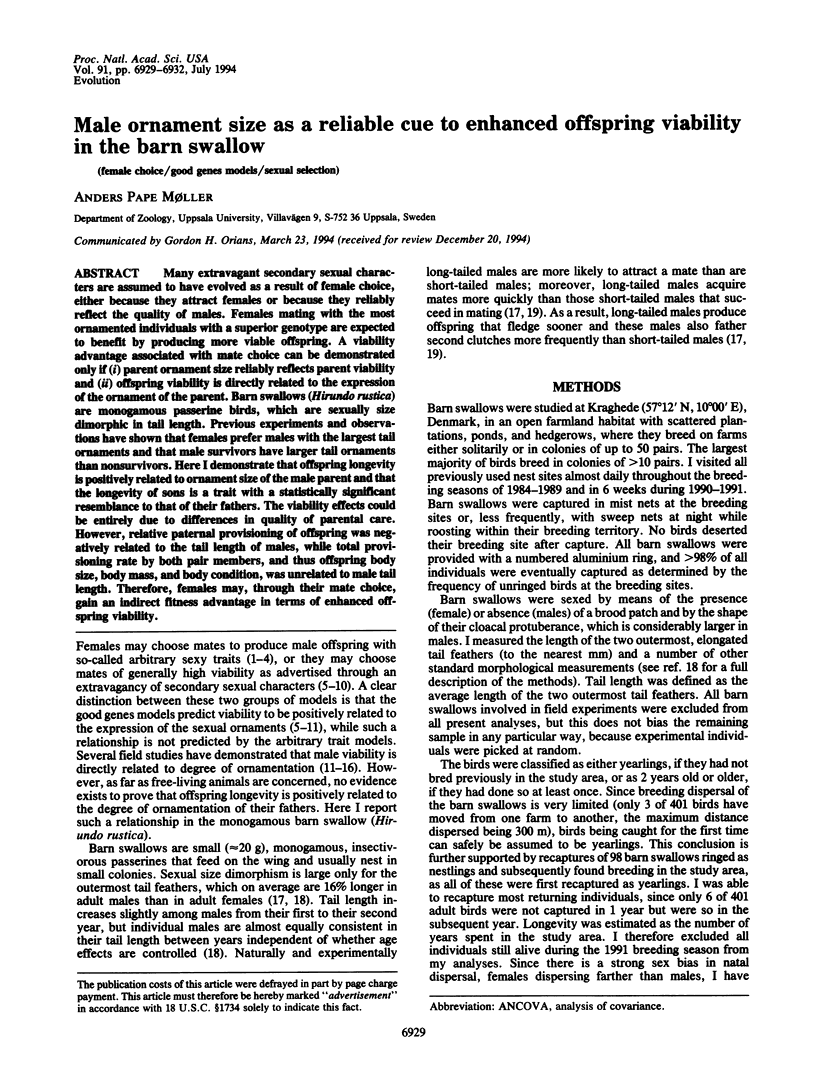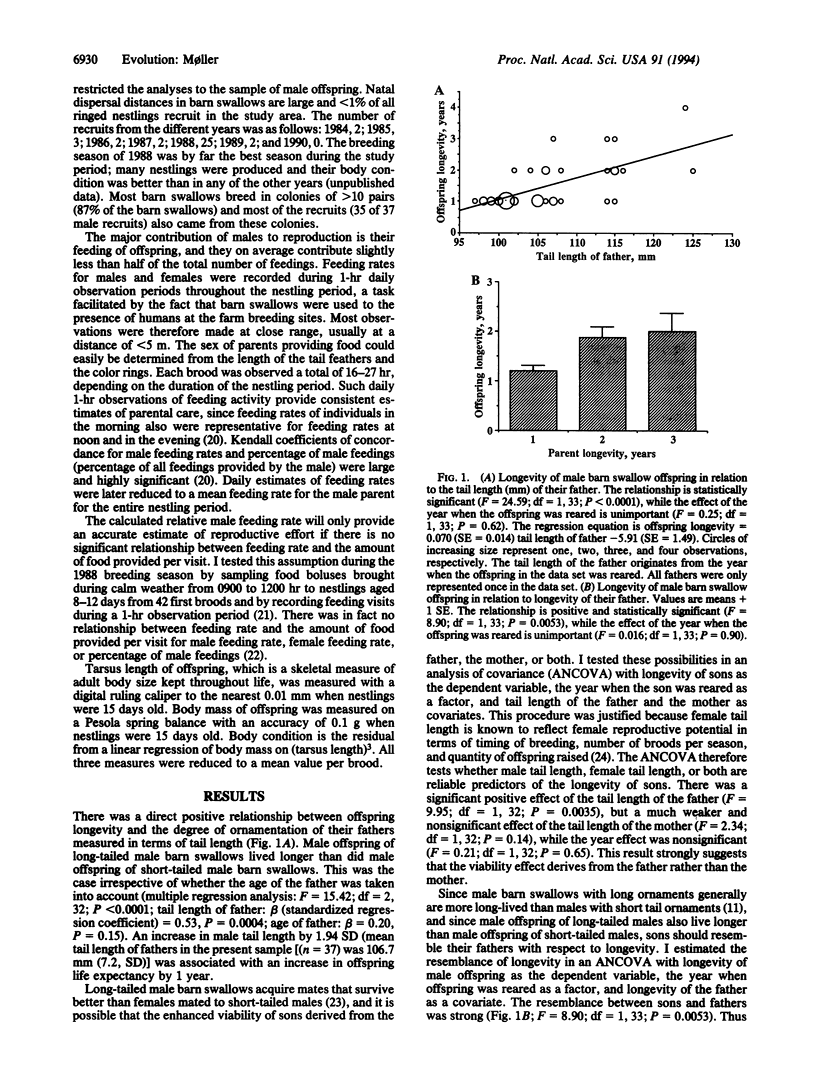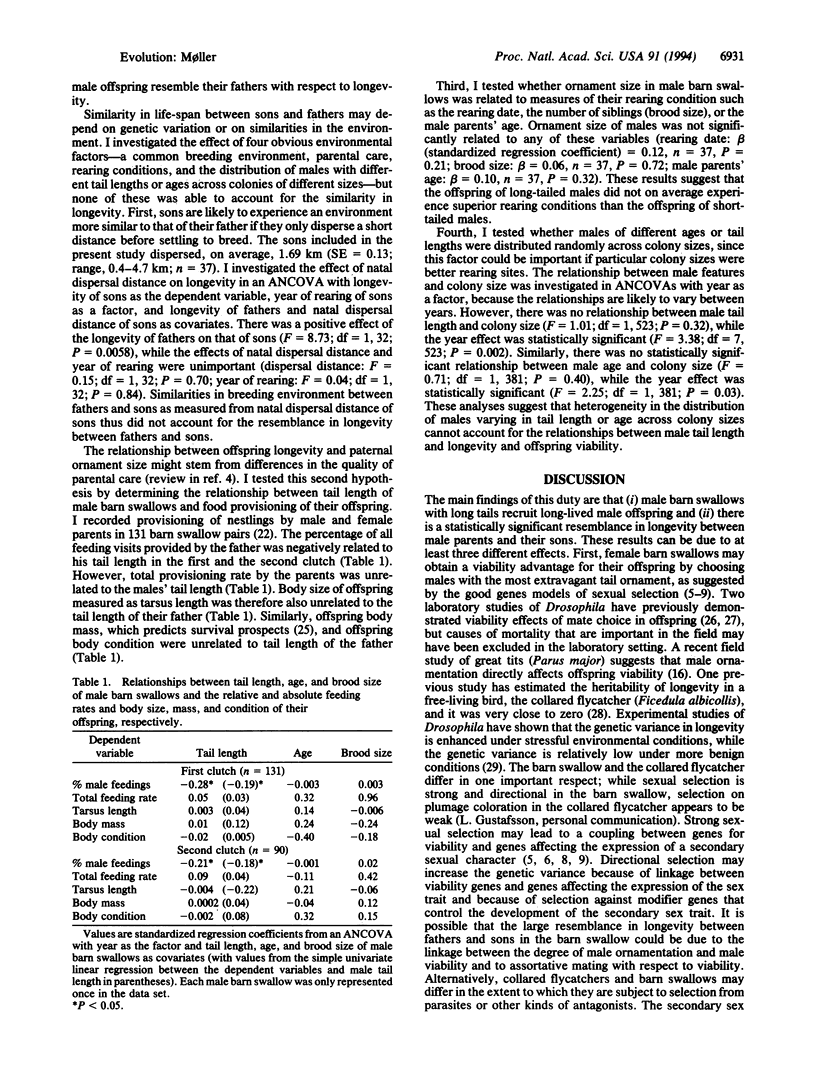Abstract
Many extravagant secondary sexual characters are assumed to have evolved as a result of female choice, either because they attract females or because they reliably reflect the quality of males. Females mating with the most ornamented individuals with a superior genotype are expected to benefit by producing more viable offspring. A viability advantage associated with mate choice can be demonstrated only if (i) parent ornament size reliably reflects parent viability and (ii) offspring viability is directly related to the expression of the ornament of the parent. Barn swallows (Hirundo rustica) are monogamous passerine birds, which are sexually size dimorphic in tail length. Previous experiments and observations have shown that females prefer males with the largest tail ornaments and that male survivors have larger tail ornaments than nonsurvivors. Here I demonstrate that offspring longevity is positively related to ornament size of the male parent and that the longevity of sons is a trait with a statistically significant resemblance to that of their fathers. The viability effects could be entirely due to differences in quality of parental care. However, relative paternal provisioning of offspring was negatively related to the tail length of males, while total provisioning rate by both pair members, and thus offspring body size, body mass, and body condition, was unrelated to male tail length. Therefore, females may, through their mate choice, gain an indirect fitness advantage in terms of enhanced offspring viability.
Full text
PDF



Selected References
These references are in PubMed. This may not be the complete list of references from this article.
- Grafen A. Biological signals as handicaps. J Theor Biol. 1990 Jun 21;144(4):517–546. doi: 10.1016/s0022-5193(05)80088-8. [DOI] [PubMed] [Google Scholar]
- Hamilton W. D., Zuk M. Heritable true fitness and bright birds: a role for parasites? Science. 1982 Oct 22;218(4570):384–387. doi: 10.1126/science.7123238. [DOI] [PubMed] [Google Scholar]
- Watt W. B., Carter P. A., Donohue K. Females' choice of "good genotypes" as mates is promoted by an insect mating system. Science. 1986 Sep 12;233(4769):1187–1190. doi: 10.1126/science.3738528. [DOI] [PubMed] [Google Scholar]
- Zahavi A. Mate selection-a selection for a handicap. J Theor Biol. 1975 Sep;53(1):205–214. doi: 10.1016/0022-5193(75)90111-3. [DOI] [PubMed] [Google Scholar]
- von Schantz T., Göransson G., Andersson G., Fröberg I., Grahn M., Helgée A., Wittzell H. Female choice selects for a viability-based male trait in pheasants. Nature. 1989 Jan 12;337(6203):166–169. doi: 10.1038/337166a0. [DOI] [PubMed] [Google Scholar]


